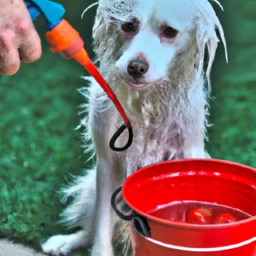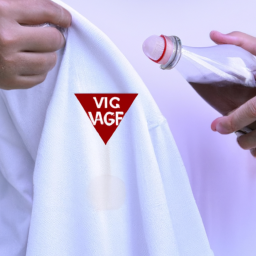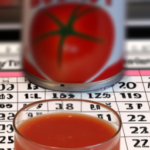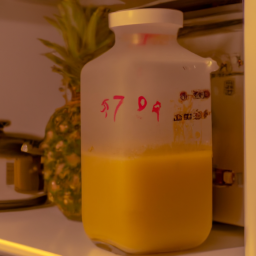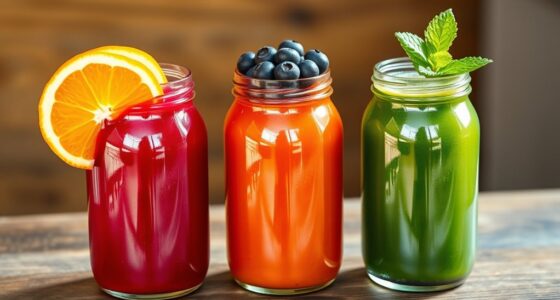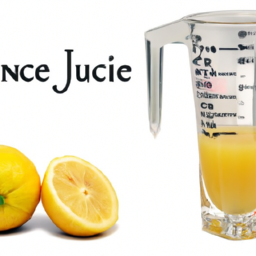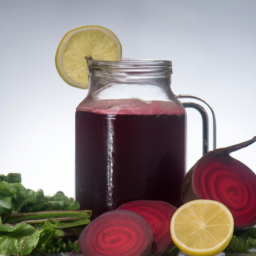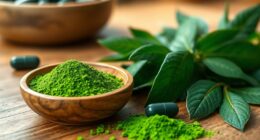I know the saying ‘curiosity killed the cat,’ but in my case, it was actually my dog. My dear pet is quite daring when it comes to exploring outside, and one day, he came across a skunk. The result? A very potent smell that could knock out a horse.
I was at my wit’s end on how to get rid of the smell until I stumbled upon a helpful tip – tomato juice can neutralize skunk odor. In this article, I will share with you the steps I took to get rid of the skunk smell from my dog using tomato juice.
With a little patience and preparation, you can save your nose and your dog from the lingering stench that skunk spray leaves behind. Whether your dog loves to explore or you live in an area with skunks, this article will provide you with the tools you need to rid your furry friend of skunk odor.
Key Takeaways
- Tomato juice can effectively neutralize skunk odor on dogs.
- It is important to assess the severity of the odor before deciding on a treatment plan.
- Prevention of skunk encounters can be achieved through various measures such as using repellents, securing food sources, and investing in motion-sensor lights or a fence.
- Proper grooming and hygiene can prevent future skunk encounters and promote a healthy coat.
Assess the Situation
So, you’ve got yourself a stinky pup and you’re wondering how to assess the situation and get that skunk smell out using tomato juice.
The first thing you need to do is assess the severity of the odor. If your dog has only had a mild skunk encounter, you may be able to get away with a quick tomato juice bath. However, if the odor is particularly strong, you may need to take additional measures to get rid of it.
To prevent skunk encounters in the future, you may want to consider keeping your dog on a leash and avoiding areas where skunks are known to roam. Additionally, you can look into skunk repellents and deterrents to help keep these critters at bay.
With that said, let’s move on to preparing the tomato juice bath.
Prepare the Tomato Juice Bath
First things first, let’s start by whipping up a nice tomato juice concoction to help our furry friend smell as fresh as a daisy. Tomato juice is a natural deodorizer and can help eliminate the skunk odor from your dog’s coat. However, if you don’t have tomato juice on hand, there are alternatives that you can use such as a mixture of hydrogen peroxide, baking soda, and dish soap or a vinegar and water solution.
To prepare the tomato juice bath, you’ll need a large container or bathtub that’s big enough to accommodate your dog’s size. Here are some steps to follow:
- Pour the tomato juice into the container or bathtub.
- Add warm water to the tomato juice until it’s diluted.
- Mix the tomato juice and water solution thoroughly.
Transitioning into the subsequent section about soaking your dog in the tomato juice bath, it’s important to remember that the longer your dog stays in the bath, the better the results will be.
Soak Your Dog in the Tomato Juice Bath
Now it’s time to give your furry friend a luxurious soak in the tomato juice bath, allowing the natural deodorizing properties to work their magic on your pup’s coat. Make sure that your dog is completely submerged in the tomato juice bath for at least 10 minutes, ensuring that the skunk smell is eliminated from their fur. If your dog is apprehensive about the bath, try to keep them calm and relaxed by petting them and talking to them in a soothing voice.
To make the tomato juice bath more effective, you can add some tomato juice alternatives that also work well in removing skunk odor. Some of these alternatives include baking soda, vinegar, and hydrogen peroxide. However, make sure to consult your veterinarian before using any of these alternatives as they can be harmful to your dog if used incorrectly. Additionally, to prevent your dog from being sprayed by a skunk again, make sure to keep them on a leash when outside, avoid areas where skunks are known to reside, and use skunk repellents if necessary.
As your dog sits in the bath, you can take this time to relax and unwind before proceeding to the next step of the skunk smell removal process.
Let Your Dog Sit in the Bath
As your furry friend luxuriates in the bath, you can imagine them shedding their skunky aura like a snake shedding its skin. Letting your dog soak in the tomato juice bath for at least 10 minutes is crucial in getting rid of the skunk smell. This gives the tomato juice enough time to neutralize the odor-causing chemicals in your dog’s fur.
Bathing your dog regularly not only keeps them smelling fresh but also promotes good hygiene. Using pet-friendly shampoo is equally important as it ensures that your furry friend’s skin isn’t irritated. When choosing a shampoo, make sure to read the label and check for any harmful chemicals that may cause health problems for your pet.
Furthermore, using pet-friendly products also helps to preserve the natural oils on your dog’s skin and coat. This is essential in keeping your dog’s skin moisturized and their coat healthy and shiny.
Once your dog has soaked in the tomato juice bath, it’s time to rinse them thoroughly to ensure that all the tomato juice has been washed off.
Rinse Your Dog Thoroughly
Make sure your furry friend is completely rinsed off after their tomato juice bath to prevent any irritation or discomfort. Proper rinsing is crucial in removing any remaining skunk odor and tomato juice residue. It is advisable to use a showerhead attachment to ensure that the water reaches every part of your dog’s body. This will also make the rinsing process faster and more efficient, especially for dogs with thick fur.
Using a showerhead attachment has several benefits. First, it allows for a more thorough rinsing, ensuring that no residue is left on your dog’s fur. Second, it helps to massage your dog’s skin, improving blood circulation and promoting a healthier coat. Lastly, it can be a more enjoyable experience for your dog, as some dogs enjoy the sensation of water from a showerhead. Remember to be gentle while using the attachment, as high pressure can be uncomfortable for your dog. Once your dog is fully rinsed off, it’s time to move on to the next step of the process and dry your dog.
(Note: Avoid writing ‘step’ in ending sentence)
Dry Your Dog
Now that my dog is thoroughly rinsed, it’s time to dry him off. I always start by using a towel to remove as much excess water as possible. This helps speed up the drying process and prevents my dog from shaking water all over my house.
Once I’ve removed as much water as I can, I let my dog air dry. This allows his fur to dry naturally without the use of a hairdryer, which can be stressful for some dogs.
Use a Towel to Remove Excess Water
First, grab a thick towel and gently press it against your dog’s fur to remove any excess water before proceeding with the tomato juice bath. This step is important because if you don’t towel dry your dog properly, the tomato juice may not be able to penetrate the fur and remove the skunk smell effectively.
Additionally, towel drying your dog is also a great way to prevent any future skunk encounters by removing any wetness or moisture on your dog’s fur, which can attract skunks.
When towel drying your dog, make sure to use gentle patting motions rather than rubbing vigorously, as this can cause your dog’s fur to tangle and knot.
Start at your dog’s head and work your way down to the tail, making sure to dry each section thoroughly. Once you have removed as much water as possible, you can then proceed with the tomato juice bath.
After the bath, allow your dog to air dry completely before letting them outside to prevent them from getting wet again and possibly attracting more skunks.
Allow Your Dog to Air Dry
To dry your furry friend after the tomato juice bath, simply let them air dry completely. Air drying has many benefits for your pet, as it helps prevent skin irritation and can even improve their coat’s texture. Not to mention, it’s a much gentler option compared to using a blow dryer or towel, which can cause unnecessary stress and discomfort for your dog.
If you’re not a fan of using tomato juice to get rid of skunk smell, there are alternative methods such as using a skunk odor removal shampoo or a homemade solution of hydrogen peroxide, baking soda, and dish soap. However, no matter what method you choose, it’s important to check for any lingering odor after your dog is completely dry to ensure that the skunk smell is completely gone.
Check for Lingering Smell
After drying my dog and using tomato juice to get rid of the skunk smell, I always make sure to do a sniff test on my dog’s fur to see if any lingering odor remains.
If there’s still a smell, I use additional remedies such as baking soda or specialized pet odor eliminators to completely remove the odor.
These extra steps ensure that my dog smells fresh and clean again.
Sniff Test Your Dog’s Fur
Take a deep breath and inhale the pungent odor emanating from your furry best friend – it’s time to test just how skunky they smell! When it comes to dog grooming, odor control is a crucial aspect. Skunk spray is a particularly potent odor that can linger for days, even after a bath. That’s why it’s important to use tomato juice to neutralize the skunk smell as soon as possible.
To start the sniff test, get up close and personal with your dog’s fur. Sniff around the face, neck, and back areas where skunk spray is likely to be concentrated. If the odor is overpowering, it’s time to take action and give your dog a tomato juice bath. However, if the smell is only faintly present, you may be able to get away with using additional remedies such as baking soda and hydrogen peroxide.
Remember that the longer you wait to treat your dog’s skunk smell, the more difficult it will be to remove. So, don’t hesitate to give your furry friend the attention they need to smell fresh and clean again.
Without writing ‘step’, it’s important to note that if the tomato juice bath and other remedies don’t fully remove the skunk smell, you may need to take additional measures. This could include seeking advice from your veterinarian or investing in professional grooming services. However, by taking immediate action and using tomato juice as a first-line treatment, you’ll increase your chances of getting rid of the skunk smell for good.
Use Additional Remedies If Needed
If your furry friend still has a lingering skunk odor, don’t worry – there are alternative methods you can use to freshen them up! Here are some additional remedies to help get rid of that pesky smell:
-
Skunk Repellent: To prevent future skunk encounters, consider using a skunk repellent spray or granules around your yard. These products contain natural ingredients that deter skunks from entering your property.
-
Bath Time: Give your dog another bath using a skunk odor removal shampoo. These shampoos are specifically formulated to break down the oils in skunk spray and remove the odor from your dog’s fur.
-
Vinegar and Water Solution: Mix equal parts vinegar and water in a spray bottle and spray your dog’s fur, avoiding their eyes and ears. Let it sit for a few minutes before rinsing with warm water. Vinegar is acidic and can help neutralize the skunk odor.
-
Baking Soda and Peroxide: Mix 1 quart of 3% hydrogen peroxide, 1/4 cup of baking soda, and 1 teaspoon of dish soap. Apply the mixture to your dog’s fur, avoiding their eyes and ears. Let it sit for a few minutes before rinsing with warm water. This solution can help break down the oils in skunk spray and remove the odor from your dog’s fur.
With these alternative methods, your dog should be smelling fresh in no time! But to prevent future skunk encounters, it’s important to take steps to keep skunks away from your property.
Prevent Future Skunk Encounters
To avoid another skunk encounter, you’ll want to keep your dog on a leash and avoid letting them roam freely at night. Skunks are most active during the evenings and night-time, so it’s important to supervise your dog during these hours.
Additionally, consider using skunk repellent tips such as planting mint or other strong-smelling plants around your yard to deter skunks from entering. If you have a garden or compost pile, make sure to secure it and keep it covered to avoid attracting skunks.
Outdoor precautions also include removing any potential food sources, such as pet food or birdseed, from your yard. Keep garbage cans securely closed and away from your dog’s reach. If you live in an area with a high skunk population, it may be worth investing in motion-sensor lights or a fence to prevent skunks from entering your property.
By taking these preventative measures, you can reduce the likelihood of future skunk encounters and keep your dog safe. As you consider professional help, remember that prevention is key to avoiding another skunk encounter.
Consider Professional Help
Consider reaching out to a professional for assistance in removing the skunk odor from your clothing and home. While using tomato juice on your dog may work, it isn’t a guaranteed solution.
A professional can assess the extent of the skunk odor and provide a more effective solution. Additionally, they can advise you on how to prevent future encounters with skunks.
Of course, the consideration of cost is important when deciding whether or not to seek professional help. However, it’s worth noting the benefits of professional assistance. Not only can they save you time and frustration, but they can also prevent further damage to your home and belongings.
In the long run, investing in professional help may be more cost-effective than attempting to solve the problem on your own.
Frequently Asked Questions
Can I use any type of tomato juice or does it have to be a specific brand?
As someone who has dealt with skunk odor on my dog, I’ve found that any brand of tomato juice will work for removing the smell. However, if you don’t have tomato juice on hand, alternatives like vinegar or baking soda can also be effective.
How long should I let my dog sit in the tomato juice bath?
I recommend leaving your dog in the tomato juice bath for at least 10 minutes, ensuring the affected areas are fully covered. If you prefer alternatives, vinegar and baking soda mixtures also work well for skunk odor removal.
Is it safe to use tomato juice on all types of dogs, including those with sensitive skin?
Using tomato juice on dogs with sensitive skin can cause irritation. Alternatives like baking soda, vinegar or specialized pet shampoos are better suited. Always consult a vet before using any product on your dog.
What should I do if my dog accidentally ingests some of the tomato juice?
If my dog accidentally ingests tomato juice, I should monitor for vomiting, diarrhea, or lethargy. The dangers of tomato juice ingestion include upset stomach and potential allergic reactions. Alternative methods for removing skunk smell from dogs include using a skunk odor remover shampoo or a mixture of hydrogen peroxide, baking soda, and dish soap.
Will using tomato juice affect my dog’s coat color or texture?
Using tomato juice on a dog’s fur may temporarily affect their coat color, but it shouldn’t have any long-term effects on their health or texture. If concerned, alternative remedies like baking soda and hydrogen peroxide can be used to remove skunk odor.
Conclusion
Well folks, I hope this article was helpful in guiding you through the process of getting skunk smell out of your furry friend. Trust me, I know firsthand how unpleasant it can be to have a skunk-sprayed pup running around your house. But fear not, tomato juice can be a lifesaver in these situations.
Remember to assess the situation before jumping into the tomato juice bath, as there may be other steps you need to take depending on the severity of the skunk encounter. And don’t forget to rinse your dog thoroughly and check for any lingering smells.
But most importantly, take steps to prevent future skunk encounters, as prevention is truly the best cure. And if all else fails, don’t be afraid to seek professional help. Your pup’s nose (and your own) will thank you.
Ilana has been a vegan for over 10 years. She originally made the switch for health reasons, but soon found herself becoming more and more passionate about the ethical and environmental implications of a vegan lifestyle. Ilana is the author of The Graceful Kitchen, a blog all about veganism. She loves to cook up delicious and nutritious vegan meals, and share her recipes with others who are interested in leading a cruelty-free life. Ilana is also a strong advocate for using whole foods as the foundation of a healthy diet, and believes that going vegan is one of the best ways to achieve this.
